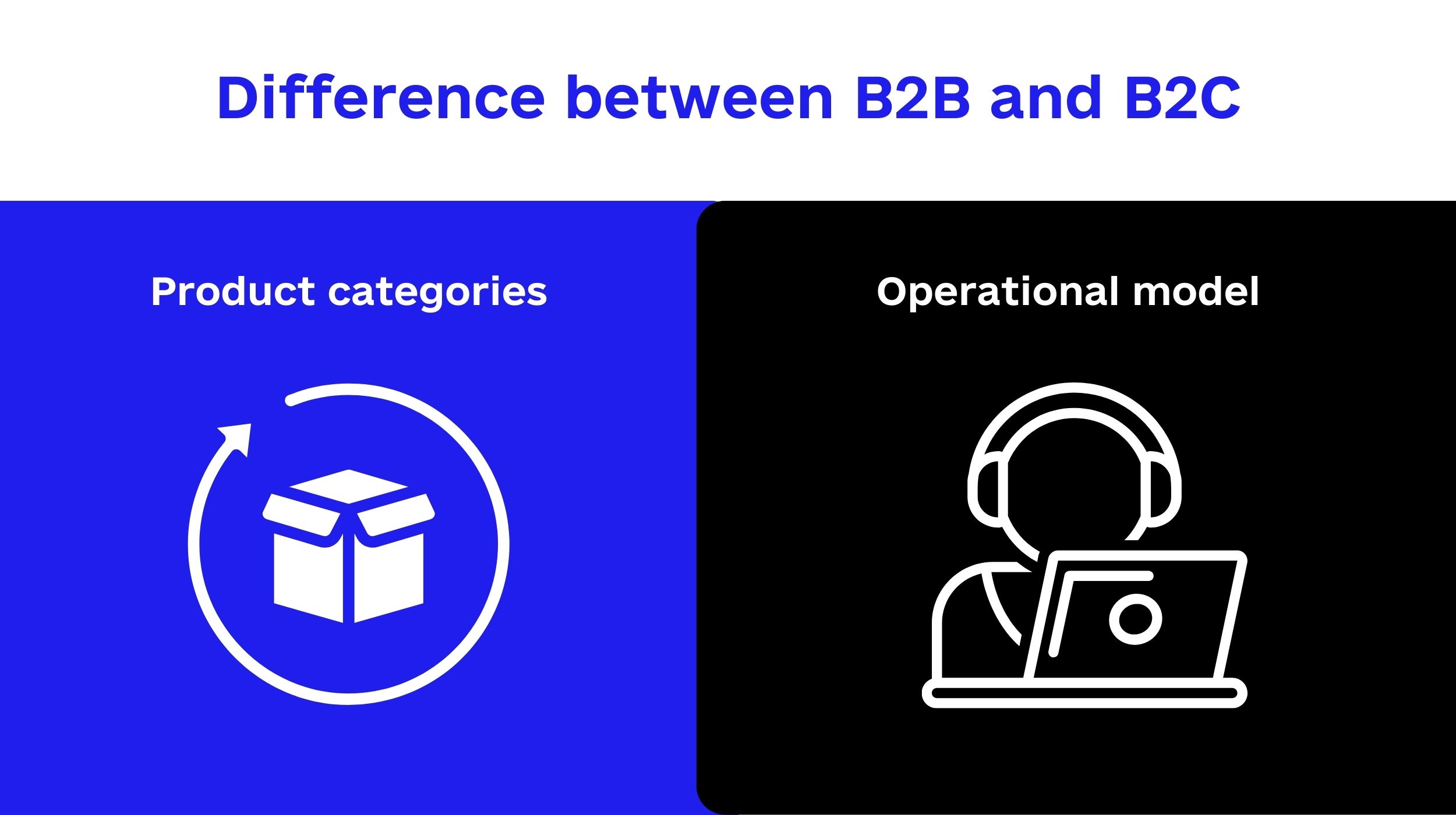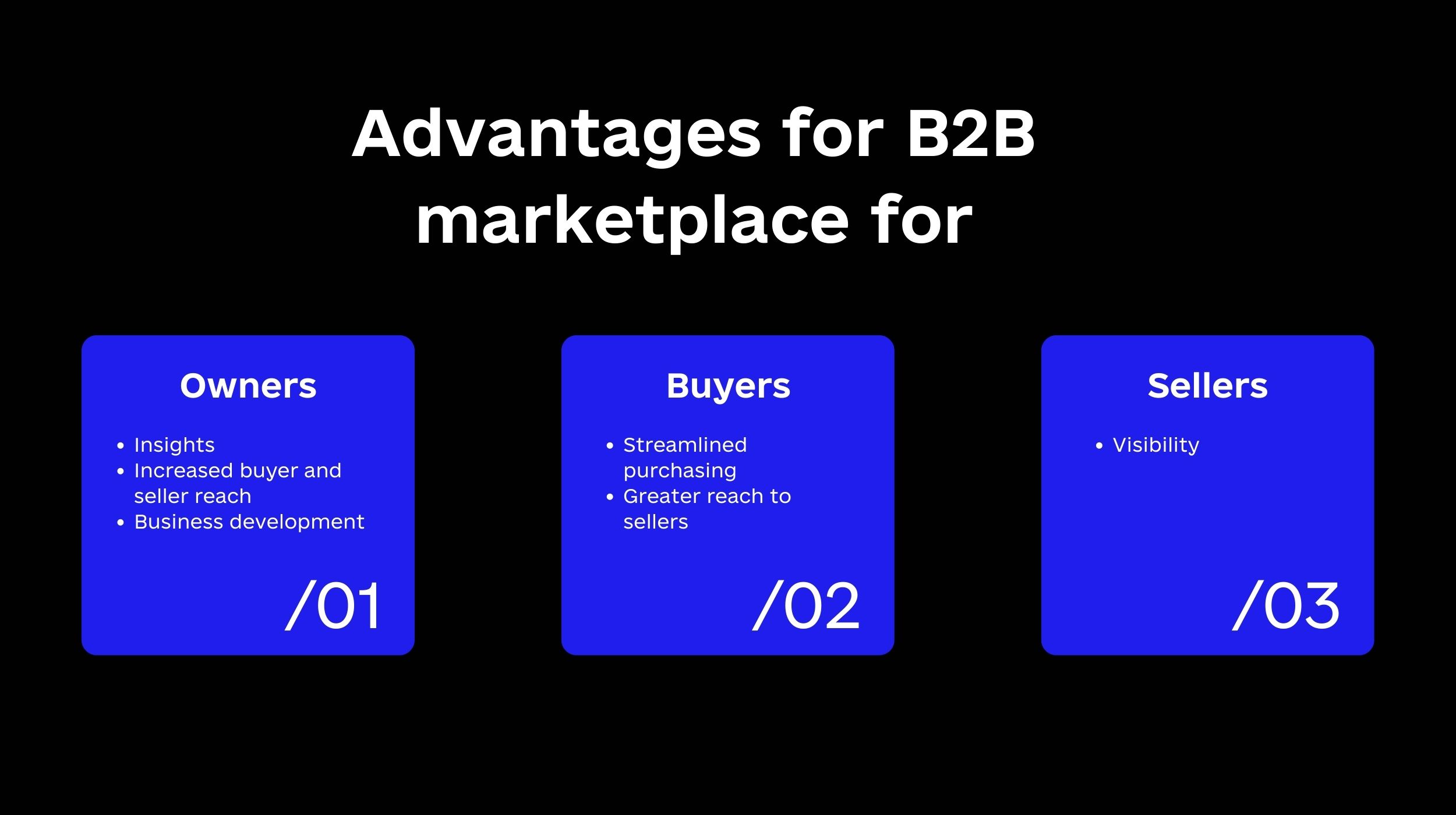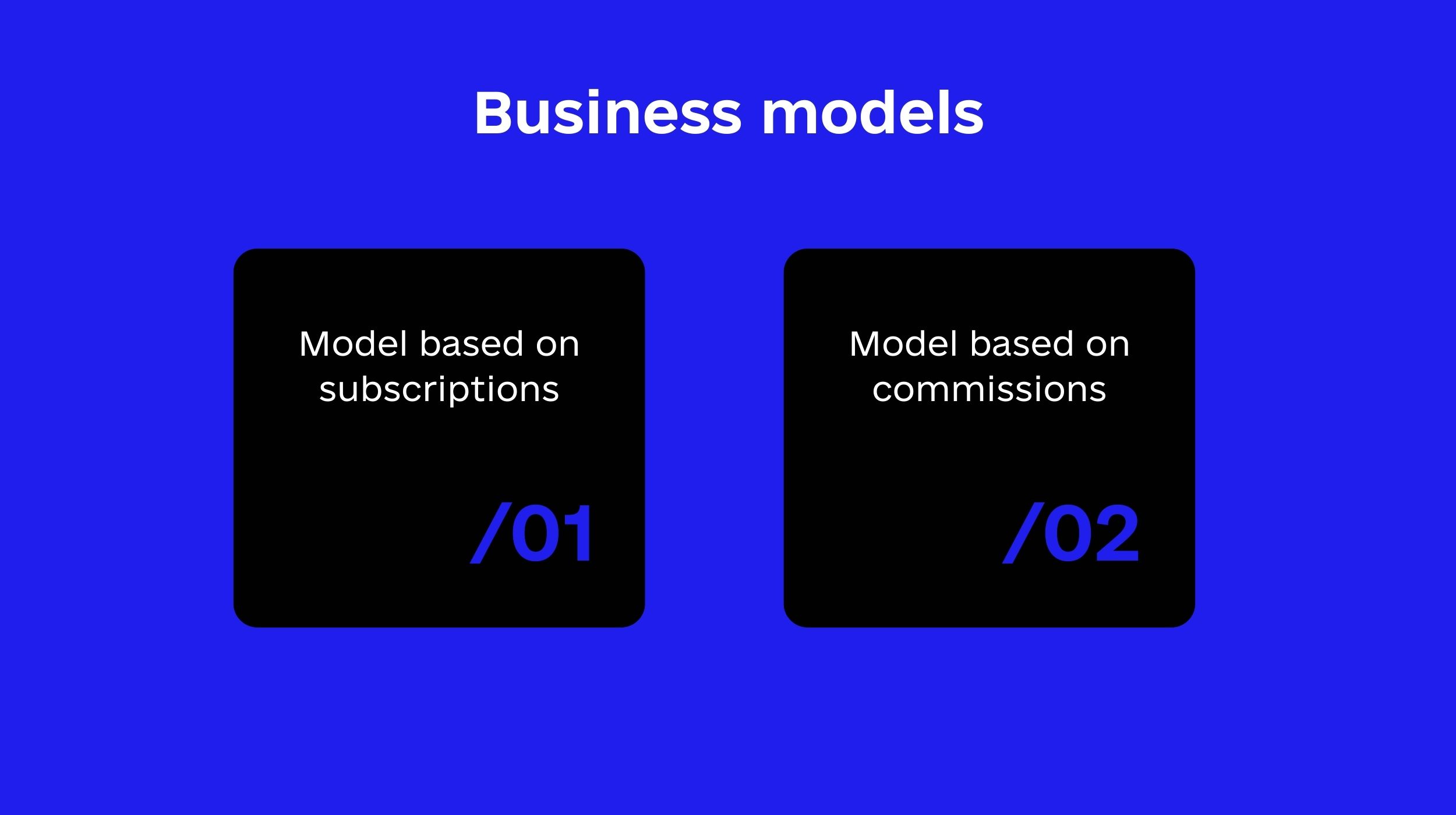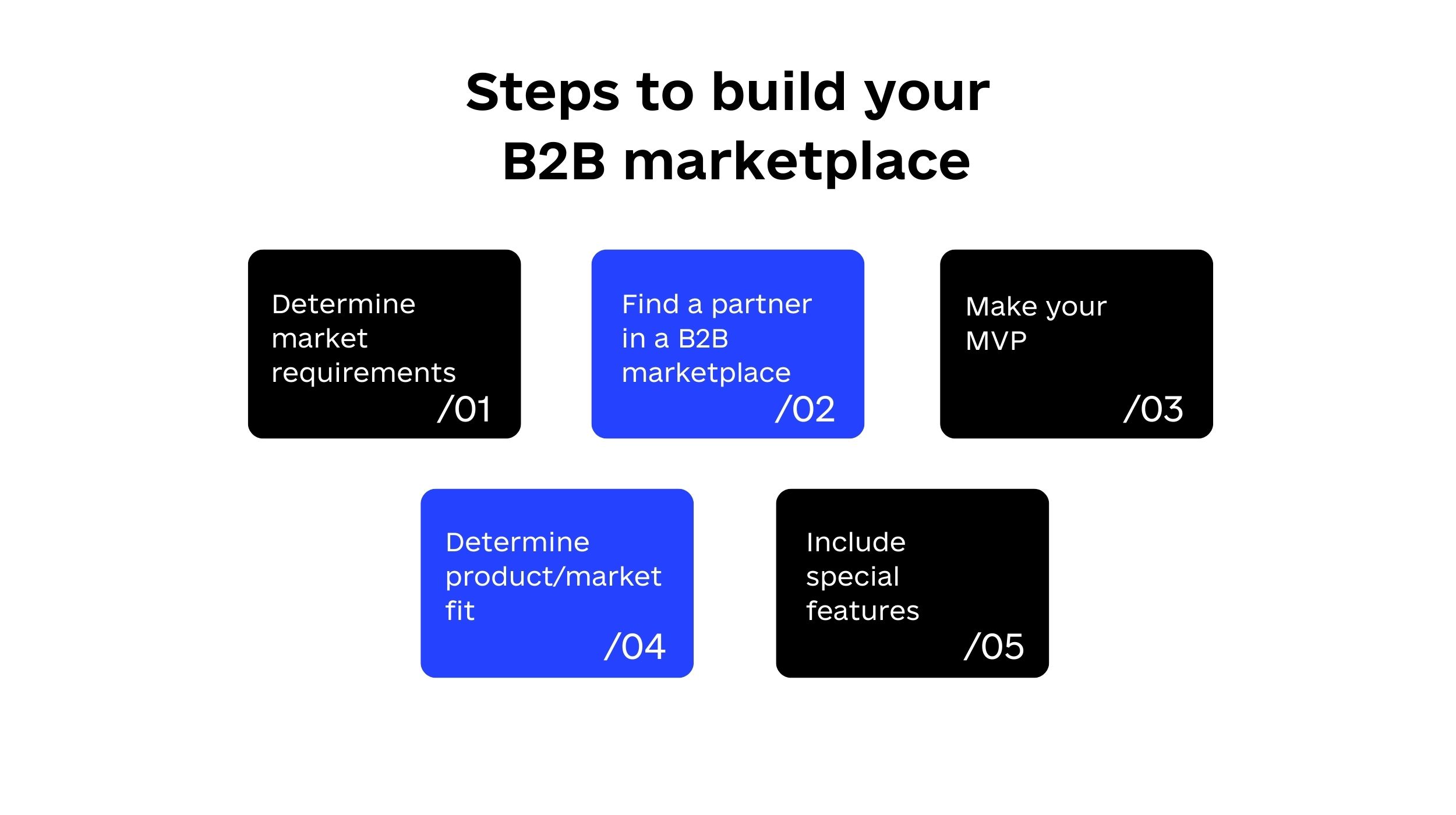The COVID-19 pandemic compelled B2B buyers and sellers to go digital in a massive way. What started out as a crisis response has now evolved into the new normal, with big implications for how buyers and sellers will do business in the future. In fact, Gartner’s Future of Sales research shows that by 2025, 80% of B2B sales interactions between suppliers and buyers will occur in digital channels. This is because 33% of all buyers desire a seller-free sales experience – a preference that climbs to 44% for millennials.
In order to drive customer demand and remain competitive within their industry, B2B professionals are further investing more in the launch and optimization of e-commerce channels. Whether you’re an established organization or a startup, the B2B marketplace is something you should consider. This article is an encyclopedia of everything you need to know. Like —”how to build a B2B marketplace,” “types of B2B marketplaces,” “must-have features,” “tech stacks,” and the list goes on and on.
Here, Code&Care performs a daring descent into the murky depths of B2B marketplace development!
Table of Contents
- 1 What is a B2B marketplace?
- 2 Relevant B2B market statistics and facts
- 3 Benefits of marketplaces for B2B
- 4 Types of B2B marketplaces
- 5 Choosing a business model
- 6 Must-have Features for B2B Marketplaces
- 7 How to start your B2B marketplace development
- 8 Tech stack and requirements
- 9 Cost of building a B2B marketplace
- 10 Pitfalls
- 11 Things to consider
- 12 Conclusion
What is a B2B marketplace?
Business-to-business online marketplaces create self-service, digitally-sourced environments where multiple vendors can offer products or services to business customers.
The major players in the global B2B eCommerce market are Amazon, Alibaba, Rakuten, Mercateo, Global Sources, Walmart, and IndiaMART. B2B marketplaces, like online B2C sites, claim to make it easier to find the right supplier while also improving the customer experience by making transactions simpler and more transparent.
Difference between B2B and B2C

✔ Product categories
B2B marketplaces are much more specialized than B2C marketplaces and may only offer a single product category. This ensures that the products are of guaranteed quality, but it also limits the market to a much smaller number of customers. They’re essentially an online line sheet that can be purchased.
✔ Operational model
Companies in the B2B eCommerce space conduct business using either the direct model or the marketplace model. The direct model entails businesses creating their own platforms and selling directly to buyers. A marketplace, on the other hand, is a platform where many companies sell their products alongside their competitors. Despite widespread adoption of B2C eCommerce, it is the recent evolution and growth of B2B eCommerce that is capturing the attention of buyers, sellers, and investors worldwide.
Relevant B2B market statistics and facts
🔹 Size, region & application
The B2B ecommerce market is expected to be worth $20.9 trillion by 2027, with a CAGR of 17.5%. The B2B ecommerce market will outgrow B2C ecommerce sales by 2027, according to projections. Consumer electronics were the most popular choice among customers who favored the expansion of the B2B e-commerce market in 2020. The segment is expected to grow at a CAGR of more than 16 percent between 2021 and 2028. In 2020, the Asia Pacific region will hold more than 60% of the market. The proliferation of digital business mediums contributed to segment growth in 202.
🔹 B2B marketplaces
While general B2B marketplaces, such as Amazon and Alibaba, remain the most well-known and offer one-stop shopping for a variety of needs, industry and brand marketplaces are gaining popularity. In the past two years, the number of B2B marketplaces has quadrupled, and it is anticipated that transactions on commercial trade and industry marketing places will increase by 130 percent. Gartner predicts that by 2023, 15% of mid-to-large B2B brands will launch their own marketplaces, and 70% of marketplaces will support B2B transactions.
As the number of B2B marketplaces grows, channel management will become increasingly difficult for vendors. To sustain their success, businesses will need to be more selective about the marketplaces they use and rely more on sophisticated marketplace management software that can support a wide variety of outlets and sophisticated marketing and personalization initiatives.
🔹 Omnichannel & hybrid selling
Because hybrid selling orchestrates the customer journey across multiple touchpoints, it is a critical capability in the omnichannel ecosystem. In this regard, 90 percent of B2B sales organizations viewed today’s B2B omnichannel reality as equally or more effective than it was prior to COVID-19 in terms of reaching and serving customers. Since the beginning of the pandemic, this percentage has steadily increased from 54 percent.
🔹 3 seismic shifts
To deliver excellence in today’s environment, B2B sales organizations must make three seismic shifts in how they approach clients and lead teams: they must become omnichannel orchestrators, adopt a value-creation mindset, and enable continuous change management.
🔹 Tactics
In late 2021 B2B marketers in the United States were asked about the new tactics, strategies and channels they wanted to implement in 2022. According to 41 percent of respondents, social media marketing was on the top of their mind to include in their 2022 marketing efforts, and 41 percent said the same about marketing personalization.
Benefits of marketplaces for B2B

Advantages for B2B marketplace for owners:
- Insights: Online marketplaces provide platform operators with a comprehensive understanding of what their potential buyers and prospective suppliers require on a global scale. They also benefit from offloading the majority of marketing tasks to global suppliers, which lowers operational costs.
- Increased buyer and seller reach: Because they have all of the demand figures from suppliers in one place, they can negotiate better prices based on aggregate demand. Furthermore, they have direct contact with a large number of buyers and suppliers, which increases their chances of capturing leads and growing their business.
- Business development: Creating a B2B marketplace is finally an opportunity to grow your existing business or start a new one in a specific market where a need has been identified.
Advantages for buyers:
- Streamlined purchasing: By allowing buyers to access both sellers on a single online platform, a global B2B marketplace streamlines procurement workflows and significantly reduces costs. Buyers, like sellers, can automate some or all of their workflows related to any procurement process. Buyers, for example, can fully automate the purchase of goods and services once your marketplace account is linked to an ERP system.
- Greater reach to sellers: Online marketplaces also provide buyers with access to a global pool of sellers, allowing them to research and compare prices and product features on a large scale, looking for the best offer that meets their specific needs.
Advantages for sellers:
- Visibility: The supplier company can enter its brand, register all important business information, register its product catalog, and make its social networks available on the platform. As a B2B sales platform, it has thousands of buyers who are looking for new supply sources. To facilitate buyer searches, it is critical to register in a complete and correct manner for successful transactions.
Types of B2B marketplaces
B2B marketplaces are divided into two types based on business type and business model. Based on the type of business, there are two types of B2B marketplaces. They are as follows:
- Vertical B2B marketplaces are those that only offer services to a specific type of business.
- Horizontal B2B marketplaces are those that provide services to various types of businesses.
There are three types of B2B marketplaces in terms of business model. They are as follows:
- B2B services marketplaces: Service marketplaces only solve business problems by providing the necessary services.
- B2B product marketplaces: Product marketplaces connect businesses in order to sell goods.
- Hybrid marketplaces. Hybrid platforms connect businesses that provide services and products. Other business models, such as B2C and C2C features, are also included. It serves both commercial and retail customers.
How to Create an E-Commerce Website Like Amazon and Flipkart?
Choosing a business model
It is crucial to decide on the business model for your B2B marketplace before you begin building it. Knowing what the two business models entail, you can compare them and select the one that will work best for your B2B marketplace. Below are the most common models.

💸 Model based on subscriptions
This is the business model in which the marketplace charges a monthly or annual fee to the user. The Freemium model is a variant of the subscription-based model in which users are given access to basic features but must pay a fee to use advanced features.
💸 Model based on commissions
This is a business model in which users are charged a set amount or percentage for each transaction they make on the platform. This is also referred to as the Transactional model.
Must-have Features for B2B Marketplaces
✅ Platform administration
A simple and user-friendly admin panel where the marketplace owner can create, design, and manage platform processes is essential. Vendors are also given a dashboard where they can manage their activity. Customers prefer a marketplace that allows them to carry out and handle important operations on their own, so this is critical to the success of your Marketplace.
✅ Catalog of products/services
This entails having a product listing feature that allows wholesalers to post their items or services along with all of the information that prospective buyers require. It also includes a search and filter feature, which allows customers to easily find products or services on your platform. It is critical for making your marketplace easier to navigate. If you want your users to handle multiple products at the same time, you can enable bulk product management.
Import and export capabilities, as well as product description functionality, can be added to a full-fledged marketplace.
✅ Payment, acquisition, and monetization
Because your clients primarily use your services to generate revenue, it is critical that you integrate payment management, payment gateway, pricing and discounts, product cart, installment payment, tax management, and other payment-related features into your marketplace. Having these capabilities on your marketplace simplifies payment collection for your platform’s users.
✅ Inventory, logistics, and delivery
For product-selling platforms, the shipment feature is critical. This includes gathering, managing, and organizing delivery providers to help get the products to the consumer after the transaction. The inventory feature allows the seller to track their products and quickly upload new products.
✅ System for invoicing and reporting
This includes the report tool, which assists in checking order status, analyzing data, and providing results based on the seller’s product performance. The Invoice function processes a product’s invoice and obtains the necessary data automatically.
✅ Data security and protection
This includes features that help users preserve and secure their data. This feature should be capable of preventing unauthorized access to or updating of data. This section discusses the database backup and data logging features. The database backup feature safeguards users’ data by saving it at a predetermined interval, whereas the data log feature shows the history of changes made to your data.
✅ User administration
There are several roles in a B2B marketplace: owner, admin, super admin, and users. Each of these roles has their own processes on the platform. This is where user administration comes into play. It entails giving them access to only the processes necessary to complete their tasks. It includes team management, vendor management, buyer management, and client groups.
✅ Account administration
This includes allowing users in each role to sign up for and manage their accounts. Some platforms do not require users to sign in before purchasing items, whereas others require customers to register before purchasing goods and services. This is where the limited-access feature comes in handy. It entails monitoring and limiting privileges and access so that only authorized users can make purchases on the platform.
A marketplace may also include Google and Apple sign-in features, allowing users to access their accounts using their Google or Apple credentials.
✅ Content administration
The content management tool is especially important because it will help the seller communicate with buyers and receive feedback. The addition of Publishing tools, which allow the user to edit, delete, and add content, makes this possible. They can also use the image/video feature to include images and videos of their products in the product description. After purchasing a product, the buyer can comment on it using the rating and review tool.
A marketplace can also include a feature that allows users to embed YouTube video URLs in their product descriptions.
✅ Portal for communication
Before purchasing or selling goods and services, users must interact. This is why a communication component is essential in a B2B marketplace. You can include communication features such as Messaging Center, live chat, and chatbot. The messaging center allows the administrator, seller, and buyer to communicate, whereas live chat allows the vendor to interact directly with the buyer. And the Chatbot feature is set up to automatically respond to frequently asked buyer questions.
How to start your B2B marketplace development
So how to build a B2B marketplace? To launch a successful B2B marketplace, you must first take some preliminary steps. These stages are critical to your platform’s success. Take a look.

- Step 1: Determine market requirements. The first step is to identify the issue your potential clients are having and offer effective solutions.
- Step 2: Find a partner in a B2B marketplace. The following step is to find a B2B marketplace partner. This entails looking for the best marketplace solutions to help you easily build your marketplace. Another option is to hire a skilled IT company to help you build your B2B marketplace website.
- Step 3: Make your Minimum Viable Product available (MVP). The next step is to present your Minimum Viable Products. These are the products that perform the primary functions of your targeted products. Creating a basic version of your marketplace will allow you to save money and time while also analyzing how your marketplace will perform once it is launched.
- Step 4: Determine product/market fit. Following the release of your MVP, you can assess the market and determine which features are required for your main products to be successful. This will help you create a product that will fit into the market and generate more demand.
- Step 5: Include special features. The fifth step in the marketplace development process is to add advanced features to those already available. Including these features can help you increase your user base and revenue.
Tech stack and requirements
Choosing the right stack for your market can be difficult if you’re new to software development. LAMP and MEAN are popular business technology stacks, but it’s best to compare them before choosing.
- LAMP: This is a pioneering and widely used tech stack. It is dependable, time-tested, and simple to use. The majority of software developers are familiar with the stack. The LAMP stack consists of the Linux operating system, the AWS, the MySQL database, and the PHP (Laravel/Symphony), or Python (Django/Flask) programming languages.
- MEAN: This is a cutting-edge technology stack that runs purely on JavaScript. MongoDB database, Express.js backend application framework, AngularJS front-end application framework, and Node.js back-end language environment are all included in the pack.
Cost of building a B2B marketplace
Some factors influence the amount of money you will need to spend on developing your B2B marketplace. These include:
- Complexity of Tech Stack Design
- Location of the development team
- Size and complexity of the market
- Developer’s hourly rate
- Set of features
After taking into account all of these variables, it is clear that the cost of developing a marketplace will vary. However, the entire process of creating a marketplace, from analysis to deployment, will take at least 3000 hours.
As a result, the cost of developing a B2B marketplace starts at $100,000 and varies depending on region and other factors.
Pitfalls
The rapidly expanding B2B economy presents numerous barriers to new entrants. The following are some of the challenges encountered in the B2B marketplace:
☑ Building clients’ trust
Don’t just consider how to build a B2B marketplace; also take into account how to gain your clients’ trust. However, it may take some time to gain your clients’ trust and establish a long-term relationship. Gaining your clients’ trust as a marketplace owner entails conducting extensive research on them and providing a high-quality solution to their concerns.
☑ Complex transaction handling
Business-to-business transactions take longer than consumer-to-consumer transactions. The sales cycle, from RFP to negotiation, proposal, and contract, may be excessively long. The only way to meet users’ expectations is to build a platform that solves their problems while also providing personalized, intelligent, and easy-to-use procurements.
Despite these difficulties, the industry provides numerous opportunities for B2B marketplace owners and users. B2B marketplaces provide the following opportunities:
☑ Providing a streamlined transaction process
Because of the need to manage complex transactions, the B2B marketplace has automated the transaction process. Users can easily complete transactions with this automation while saving money, time, and effort.
☑ Entering highly fragmented markets
In a fragmented and competitive market, marketplaces excel at compiling goods or services, allowing for easy comparison, and providing clients with quick access to the best- and most reliable-operators. Transparency and efficiency of transactions are improved as a result.
Things to consider
If you are serious about developing a successful B2B marketplace, there are several factors to consider. Among the elements are:
- Marketplace platform visibility: With statistics indicating that 57% of B2B researchers use the internet during their research, it is critical to increase the visibility of your marketplace to increase your client base and revenue.
- Platform functionality and user experience: Bringing in high-quality buyers is important, but keeping them is even more important. As a result, it is important to design a platform that provides an exceptional user experience and essential capabilities.
- Integration: It is critical to increase marketability and client retention by integrating other critical and in-demand solutions into your marketplace. This could also lead to future collaboration with the integrator’s owner.
Conclusion
A B2B marketplace necessitates considerable effort. However, given the trend of businesses shifting to online sales, it is clear that the industry has great potential. With all of the information in this article, you can enter the niche immediately and become the owner of one of the most successful marketplaces.
Read also:
How to Make an App Like Udemy in 2022: Features, Costs, and Tech Stack
How to Build a SaaS Product from Scratch [A Practical Guide]
Tips To Build a Freelancer Marketplace Like Upwork
The Best Language to Build ECommerce Website That You Can Use in 2022
















Popular
Latest